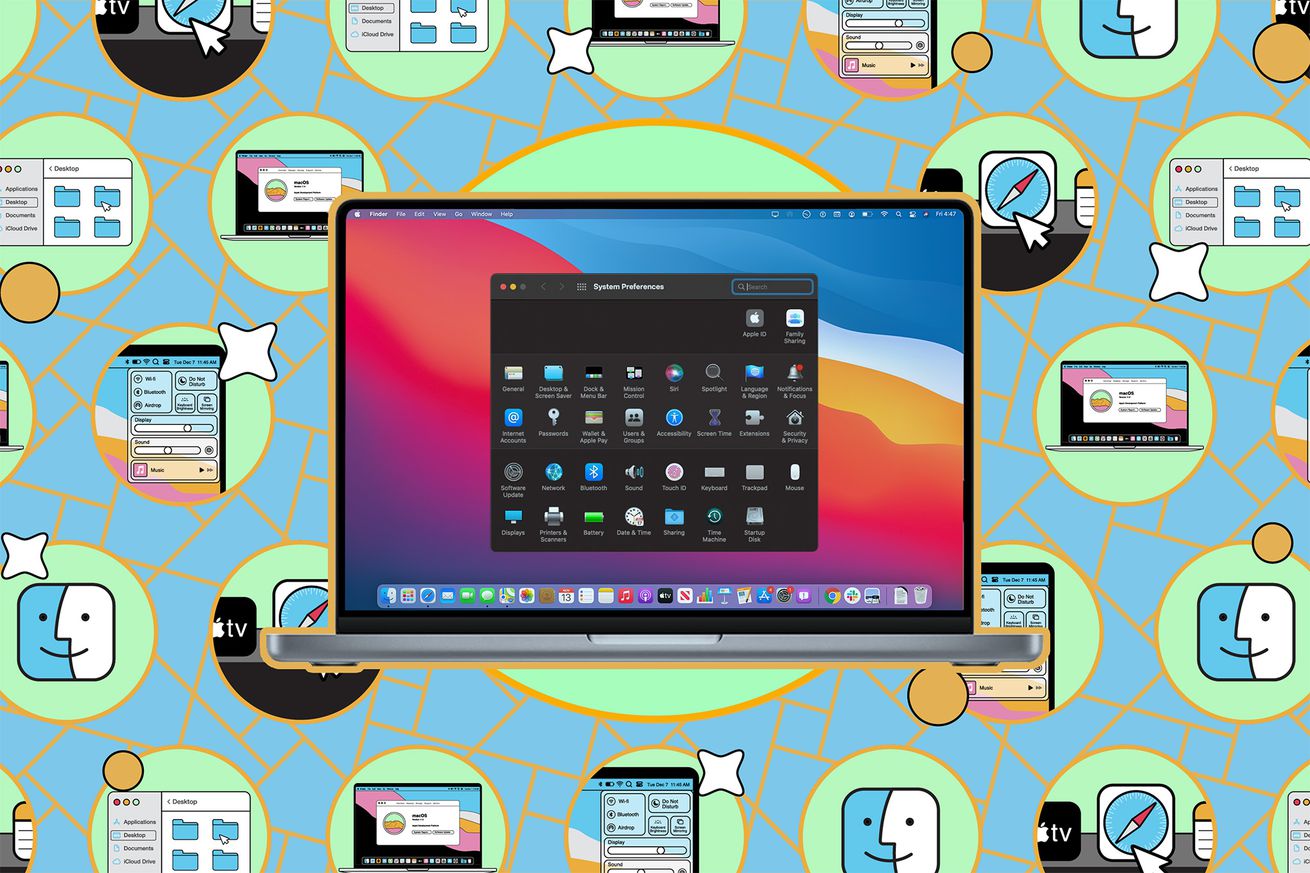
When it comes to headphones and true wireless earbuds, there are a ton of brands and products to choose from. However, the sheer range of available models can also make them difficult to shop for, especially since many of them cater to different lifestyles, budgets, and priorities. Some are better suited for long-haul flights and vigorous workouts, for instance, while others let you tune out noise so you can focus better.
That’s why we’ve curated a list of the best headphone and earbud deals available. Here, you’ll find sales on all kinds of earbuds and over-ear headphones, all of which come with their own strengths and weaknesses. And if you want to do even more research before making a buying decision, we’ve put together guides to the best wireless earbuds and best noise-canceling headphones, which can help you determine which pair is right for you.
Best Apple deals
AirPods Pro (second-gen) deals
If you own an iPhone or multiple Apple products, the second-gen AirPods Pro are probably your best bet when it comes to wireless earbuds. In comparison to the base AirPods, the Pros offer better sound quality and feature active noise cancellation, not to mention seamless integration with iOS and a MagSafe-compatible charging case.
In 2022, Apple launched a new pair of AirPods Pro with improved sound quality and better noise cancellation. They also include onboard volume controls and a new MagSafe charging case, one that can beep if you ever misplace it thanks to its deeper Find My integration. The earbuds even come with an extra swappable tip for smaller ears.
A year later, Apple released the updated AirPods Pro with a USB-C charging case. Along with USB-C support, the wireless earbuds offer a more robust IP54 rating for water and sweat resistance. Plus, when paired with Apple’s forthcoming Vision Pro headset, they support lossless audio.
During Black Friday, we saw steep discounts on both versions of the second-gen AirPods Pro, with retailers taking up to $60 off. These deals have since resurfaced, and you can currently buy the AirPods Pro with USB-C at Amazon, Walmart, and Best Buy for $189 instead of $249.
Read our impressions of the latest AirPods Pro here.
AirPods (second-gen) deals
Alternatively, you can buy a pair of the second-gen AirPods with a Lightning charging case. Their sound quality isn’t quite up to par with newer models, however, they remain the cheapest Apple earbuds on the market and continue to pair seamlessly with a range of Apple products thanks to their built-in H1 chip. The entry-level AirPods normally retail for $129, but you can currently get them for around $99 at Amazon, Walmart, and Target.
The second-gen AirPods are a lot harder to get ahold of with a MagSafe charging case, that is, unless you’re shopping for a used or refurbished pair of earbuds. Luckily, you can still buy them in new condition at Adorama for $119.99 ($30 off).
Read our AirPods (second-gen) review.
AirPods (third-gen) deals
Last on Apple’s wireless earbuds block are the third-gen AirPods, which represent the latest iteration of the base model. They blend a bit of the AirPods Pro look with the hard plastic build of the second-gen model; they also offer IPX4 water resistance and improved sound quality over the latter, even if they are still lacking in the low end.
Right now, you can buy the third-gen AirPods with either a MagSafe charging case or a Lightning-only charging case. The option with the wired charging case is on sale at Amazon, Best Buy, and Target for $149.99 ($20 off), while the option with the MagSafe charging case is going for $169.99 ($10 off) at Costco (if you’re a member) or for $174 at B&H Photo.
Read our AirPods (third-gen) review.
Best Beats deals
Beats Studio Pro
Last year, Apple-owned Beats replaced the Beats Studio 3 with the Beats Studio Pro. The over-ear headphones offer better sound quality thanks to new features like support for lossless audio over USB-C. They also cancel noise out far better, while allowing you to take advantage of both iOS and Android features, including Fast Pair and Google’s Find My Device platform. The Beats Studio Pro normally go for $349.99, but right now they are on sale for $179.99 ($170 off) at Amazon, Best Buy, and Target.
Read our Beats Fit Pro review.
Beats Fit Pro deals
The Beats Fit Pro are the latest fitness earbuds from Apple and offer a sportier design and better sound than the first-gen AirPods Pro. The wing tips help to keep them in place when you’re active, while also ensuring they remain comfortable over long listening sessions. Their functionality with Android phones is slightly limited, but if you use an iPhone, you get all the conveniences of Apple’s H1 chip and deeper OS integration and connectivity. Their only real downside is that the included charging case is overly large and lacks wireless charging (which is more forgivable at lower price points).
You can currently buy the Beats Fit Pro for $159.99 ($40 off) in select colors — including blue and yellow — at Amazon, Target, and Best Buy. You can also pick them up at Amazon and Best Buy in other shades, like black, for $20 more.
Read our Beats Fit Pro review.
Best Sony deals
Sony WH-1000XM5
They aren’t a huge departure from the previous model, but the Sony WH-1000XM5 are still our favorite pair of noise-canceling headphones. The XM5s improve on all of the features that made the XM4s so awesome by providing better active noise cancellation, improving the voice call quality, and boosting the overall sound of the already excellent headphones. While the lack of new features is a bit disappointing, the Sony XM5s remain one of our top recommendations for anyone looking for a premium pair of noise-canceling headphones.
Right now you can buy the XM5s in black for $299.99 ($200 off) at Amazon and Target, which remains one of their best prices to date.
Read our Sony WH-1000XM5 review.
Sony WH-CH720N deals
If you’re looking for noise-canceling headphones for under $150, Sony’s WH-CH720N might be worth a look. The budget-friendly headphones come with adjustable noise cancellation and are exceptionally light, which allows for a more comfortable fit. They also feature Bluetooth support and offer up to 35 hours of continuous playback on a single charge, though they lack support for Sony’s higher-quality LDAC codec.
The headphones typically retail for $149, but right now, you can buy the WH-CH720N in black for $99.99 at Amazon.
Sony WF-C700N deals
The WF-C700N are another pair of noise-canceling earbuds from Sony and are currently available for $85.85 ($35 off) at Amazon. They’re an exceptionally comfortable pair of earbuds with decent sound quality and support for an array of useful software features, including Fast Pair support on Android as well as location-based sound settings. Admittedly, their noise cancellation doesn’t truly drown out the world, but it does eliminate some sound. Voice call quality isn’t particularly impressive, either, but if you just need an affordable pair of earbuds to help you tune out some noise, the WF-C700N should do just fine.
Read our Sony WF-C700N review.
Best Bose deals
Bose QuietComfort 45 deals
The Bose QuietComfort 45 remains a terrific pair of noise-canceling headphones despite the fact Bose recently replaced them with the Bose QuietComfort Headphones. They’re foldable, so you can easily carry them around with you, and exceptionally comfortable. Battery life sits at 24 hours as well, meaning you needn’t worry about constantly having to charge them, and they include a transparency mode that comes in handy when you want to be more aware of your surroundings. They don’t come with adjustable noise cancellation and you can’t set custom listening modes like you can with the newer QC Headphones, but they’re otherwise a solid buy. And right now, you can pick them up for $229 ($100 off) at Best Buy and Target.
Read our Bose QuietComfort 45 review.
Bose Noise Cancelling Headphones 700 deals
If you plan to frequently use your headphones for voice calls, Bose’s Noise Cancelling Headphones 700 are a great option for doing so. They boast excellent voice call quality, meaning everybody on your Zoom call will be able to hear you loud and clearly, and they offer great noise cancellation with satisfactory sound. The over-ear headphones can also connect to two devices simultaneously but only offer 20 hours of battery life, which is less than other top noise-canceling headphones.
Unlike the new Bose QuietComfort Ultra, however, they don’t have a foldable design or physical controls. Their call quality and noise cancellation aren’t as impressive, either, and they lack the higher-quality Bluetooth codecs and immersive audio mode found in Bose’s newer headphones. If none of that matters to you, though, you can, currently buy the Bose Noise Cancelling Headphones 700 for $299 ($80 off) at Best Buy.
Read our Bose Noise Canceling Headphones 700 review.
Best Google deals
Google Pixel Buds Pro deals
The Google Pixel Buds Pro are another good pair of noise-canceling earbuds, particularly for Pixel phone owners. The wireless earbuds offer terrific sound quality and battery life, along with useful features like multipoint Bluetooth connectivity. If you own a Pixel phone, you’ll also get access to exclusive features like head-tracking spatial audio and easy access to their settings menu.
We’ve seen the wireless earbuds sell for as low as $118, however, right now they’re only on sale in select colors at Amazon and Walmart starting at $149.95 ($50 off).
Best Samsung deals
Samsung Galaxy Buds 2 Pro deals
Samsung has a few different wireless earbuds to choose from. Its most high-end pair, the Galaxy Buds 2 Pro, launched in 2022. They’re still a good option if you’re an Android user or Samsung devotee who wants a pair of premium earbuds, with top-notch sound quality that’s even better than their predecessor. Samsung Galaxy phone owners can also take advantage of higher bit rate audio, while everybody can enjoy good active noise cancellation and a relatively robust IPX7 sweat and water resistance.
You can currently buy the Samsung Galaxy Buds 2 Pro on sale for $169.99 ($60 off) at B&H Photo and direct from Samsung.
Read our Samsung Galaxy Buds 2 Pro review.
Samsung Galaxy Buds FE deals
In late 2023, Samsung launched a new pair of wireless earbuds, the Samsung Galaxy Buds FE. For a relatively affordable pair of buds, they deliver impressive noise cancellation along with solid audio performance. What’s nice is that they also come with wing tips, which should offer a more secure fit depending on your ear shape. The main trade-off, though, is that the budget-friendly buds lack multipoint connectivity and wireless charging.
If that’s not a problem for you, you can buy the Galaxy Buds FE right now for just $79.99 ($20 off) at Amazon and Samsung. That’s $10 shy of their all-time low, and their second-best price to date.
Best Jabra deals
Jabra Elite 8 Active deals
Jabra’s Elite 8 Active are a pair of fitness-focused earbuds and the successor to the excellent Elite 7 Active. They’re a terrific pair of earbuds if you like to go for runs, with a robust IP68 rating water resistance rating, adaptive ANC, and soon — thanks to a scheduled over-the-air update announced during CES — wind detection tech that should allow them to fare better under windy conditions. Plus, unlike similar offerings from Beats and Anker, the Elite 8 Active offer a secure fit without the need for added hooks or fins. At the same time, they retain the essentials, like support for multipoint and wireless charging.
Normally $199.99, they’re currently on sale for $159.99 at Amazon, Best Buy, and Jabra’s online storefront.
Jabra Elite 4 Active deals
If you prefer a more affordable pair of earbuds that are geared toward working out, there’s also Jabra’s Elite 4 Active. They come with IP57 water resistance and active noise cancellation (though you can’t adjust it) but lack wireless charging. However, if you’re fine without the extra bells and whistles, you can buy them for $79.99 ($40 off) at Amazon, Best Buy, and Walmart.
Jabra Elite 3 deals
The Jabra Elite 3, Jabra’s budget-friendly wireless earbuds from 2021, are also available right now for a nice little discount. In his review, The Verge’s Chris Welch noted that even though the Jabra Elite 3 shed features like active noise cancellation and multipoint Bluetooth support, they still provide an excellent listening experience at a relatively low price point. Normally $79.99, the earbuds are currently available from Jabra, Target, and Walmart in select colors for around $49.99.
Read our Jabra Elite 3 review.
Sennheiser Momentum True Wireless 3 deals
At CES this year, Sennheiser announced the new Momentum True Wireless 4 wireless earbuds will be available on February 29th for $299.95. If you can’t wait until then, though, their predecessor, theMomentum True Wireless 3, are currently on sale.
We’ve yet to test the forthcoming earbuds, which Sennheiser says should offer better battery life and sound quality. Until we do, the third-gen earbuds remain our top pick if you prioritize sound quality above all else. They offer better noise cancellation than their predecessor, along with a sleeker design and wireless charging support. This does come at a fairly steep regular price of $279.95, but right now you can buy them starting at just $175 in black at Amazon. You can also buy them on sale in a greater number of shades for $199.99 at Best Buy and from Sennheiser directly.
Read our Sennheiser Momentum True Wireless 3 review.
Best UE deals
UE Fits deals
After testing a pair for ourselves, we remarked in our review that the UE Fits were the most comfortable consumer earbuds on the market. That’s because, unlike the other wireless earbuds on this list, the UE Fits are uniquely capable of permanently molding to the shape of your ears in just 60 seconds, making them a great choice for those concerned their earbuds may come loose or fall out. We also found that they offer good sound quality, as well as lengthy, eight-hour battery life. Normally $199, you can get them right now for $169.99 direct from Ultimate Ears.
Read our UE Fits review.
Best Nothing deals
Nothing Ear Stick deals
If you like the new Beats Studio Buds Plus because of their transparent look, Nothing’s Ear Stick earbuds are a cheaper option that’s currently available for $79 ($40 off) from Nothing. They’re not quite as capable as the Beats and lack premium features like active noise cancellation, but they’re certainly stylish thanks to their see-through design and tube-like charging case. The open-style earbuds also deliver good sound, along with improved battery life and better voice call quality than their predecessor.

/cdn.vox-cdn.com/uploads/chorus_asset/file/25214983/walmart_drone_delivery_gif.gif) GIF: Walmart
GIF: Walmart/cdn.vox-cdn.com/uploads/chorus_asset/file/25214644/Walmart_drone_expansion_visualization.jpg) Image: Walmart
Image: Walmart

/cdn.vox-cdn.com/uploads/chorus_asset/file/25199634/121223_CES_2024_MSI_Titan_18_laptop_ADiBenedetto_0006.jpg)


/cdn.vox-cdn.com/uploads/chorus_asset/file/25200769/WITHINGS_Visual_4_Temperature_A_1.jpg) Image: Withings
Image: Withings
/cdn.vox-cdn.com/uploads/chorus_asset/file/25200773/Withings_BeamO___Power_Generator_transparent_BG.jpg) Image: Withings
Image: Withings




/cdn.vox-cdn.com/uploads/chorus_asset/file/25206194/Richard_Lawler_homescreen.jpg)


/cdn.vox-cdn.com/uploads/chorus_asset/file/25207621/CO3234387_1.jpg) Image: Jackery
Image: Jackery
/cdn.vox-cdn.com/uploads/chorus_asset/file/25207623/CO3234387_3.jpg) Image: Jackery
Image: Jackery



/cdn.vox-cdn.com/uploads/chorus_asset/file/25204192/01_select.jpg)
/cdn.vox-cdn.com/uploads/chorus_asset/file/25204251/02_screen.jpg)
/cdn.vox-cdn.com/uploads/chorus_asset/file/25204261/03_displays.jpg)

